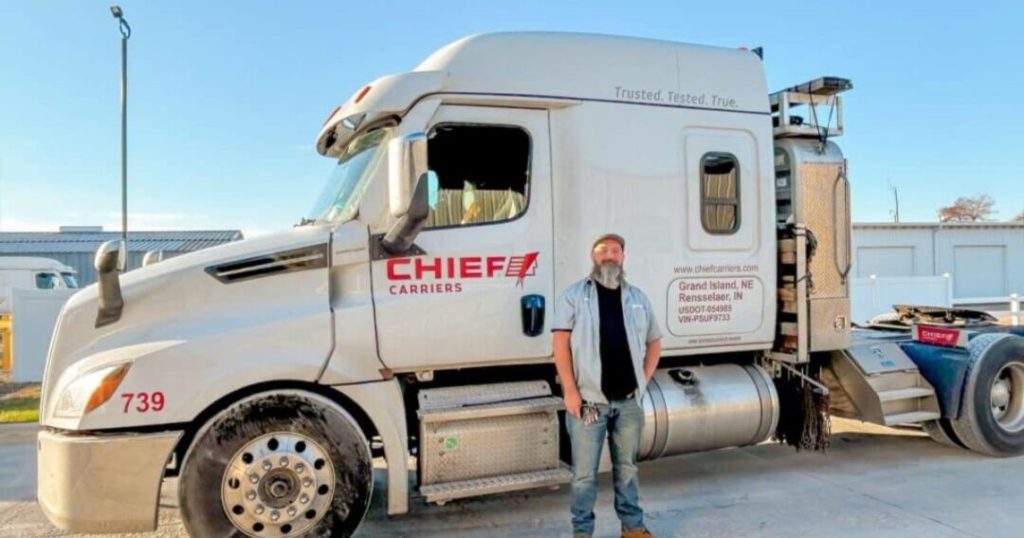The commercial trucking industry is constantly evolving due to technological advancements, regulatory changes, and shifting market demands. To keep up, CDL (Commercial Driver’s License) training programs have had to adapt and evolve as well. This article explores how these programs are embracing change to ensure new drivers are fully prepared for the modern trucking landscape.
1. Incorporating Technology in Training
Technology plays a vital role in today’s trucking industry, and CDL training programs are making sure new drivers are tech-savvy. From using GPS systems and electronic logging devices (ELDs) to operating advanced safety systems, drivers must be proficient in various tech tools to be effective on the job.
Simulation-Based Training
Many CDL training schools are now using driving simulators as part of their programs. These simulators offer a safe environment for new drivers to gain experience without the risk of being on the road. Simulation training can replicate hazardous conditions like icy roads, heavy traffic, or sudden stops, helping trainees build confidence and skills in a controlled setting.
Real-Time Data and Analytics
Some CDL training programs are integrating telematics data and analytics into their curriculum. This technology allows trainees to receive instant feedback on their driving performance, including metrics such as speed, braking, and fuel efficiency. By analyzing this data, instructors can provide targeted coaching and help students develop safer driving habits.
2. Emphasis on Safety and Compliance
Safety remains a top priority in the trucking industry, and CDL training programs are adapting by placing an even greater emphasis on safety protocols and regulatory compliance. This focus helps ensure that new drivers enter the workforce with a solid understanding of how to minimize risks on the road.
Preparing for Regulatory Changes
With new regulations frequently being introduced, CDL programs are updating their curriculum to keep students informed about changes. This includes training on hours-of-service (HOS) rules, ELD mandates, and vehicle inspection requirements. By staying current with regulatory changes, drivers can avoid costly fines and keep themselves and others safe on the road.
Defensive Driving Techniques
CDL training programs are placing more emphasis on defensive driving. Drivers are taught how to anticipate and respond to potential hazards, reduce the likelihood of collisions, and protect themselves from common road dangers. Learning these techniques is critical for building safer driving habits that last a lifetime.
3. Customizable Training Options
Not every driver’s career path is the same, and CDL training programs are increasingly offering flexible, customizable training options. This allows trainees to focus on areas that align with their career goals, whether they aspire to drive locally, regionally, or across the country.
Specialized Endorsements
Many training programs offer specialized training for drivers who want to obtain endorsements. Examples include hazardous materials (HazMat) endorsements, tanker endorsements, or passenger vehicle endorsements. Tailored programs help drivers gain the skills they need to pursue their specific career interests and increase their earning potential.
Flexible Scheduling
To accommodate the needs of working adults, some CDL training schools offer flexible scheduling options, including evening and weekend classes. This approach makes it easier for aspiring drivers to balance their training with existing job or family responsibilities.
4. Hands-On Experience and Real-World Training
While classroom instruction remains an important part of CDL training, there is a growing emphasis on hands-on experience. Practical, real-world training ensures drivers have the skills necessary to handle a range of situations on the road.
Mentorship Programs
Some CDL training schools partner with experienced drivers to provide mentorship opportunities for new trainees. Learning directly from seasoned professionals allows new drivers to gain insights into life on the road, valuable tips for managing their schedules, and guidance on how to navigate challenging situations.
Training in Modern Trucks
CDL training programs are equipping trainees with hands-on experience in modern trucks outfitted with the latest technologies. This ensures drivers understand how to operate complex vehicle systems, such as automated transmissions and advanced driver assistance systems (ADAS). Online CDL training by experts can provide even more in-depth instruction on mastering these new technologies.
5. Addressing the Driver Shortage and Attracting New Talent
The trucking industry faces a driver shortage, which has prompted training programs to innovate in order to attract and retain new talent.
Outreach and Recruitment Initiatives
Many programs are actively recruiting young drivers, women, and veterans through targeted outreach efforts. By creating awareness about the career opportunities in trucking and offering incentives, training schools are helping address the driver shortage.
Building a Supportive Training Environment
Providing a supportive and inclusive training environment is another way CDL programs are adapting. Many schools now offer mentoring, job placement assistance, and resources for managing life on the road, making the transition into a driving career more seamless and less daunting.
6. Evolving Curriculum to Meet Industry Demands
CDL training programs must adapt their curriculum to align with changing industry demands. This includes focusing on areas such as fuel efficiency, green initiatives, and the use of alternative fuels, such as electric trucks.
Sustainability Training
Many CDL training programs now incorporate lessons on sustainability and green trucking practices. As more companies prioritize reducing their carbon footprint, drivers with knowledge of eco-friendly practices will be in high demand.
Training on Freight Management
Programs are also providing training on freight management, including how to maximize load efficiency and reduce deadhead miles. This helps drivers develop valuable skills that contribute to cost savings and improved operational efficiency.
Conclusion: Adapting for the Future
CDL training programs are evolving rapidly to meet the needs of a changing trucking industry. By incorporating technology, emphasizing safety, providing hands-on experience, and offering flexible training options, these programs are preparing the next generation of drivers for success. For those considering a career in trucking, choosing a program that adapts to industry trends ensures they enter the workforce with the skills and knowledge needed to thrive.
